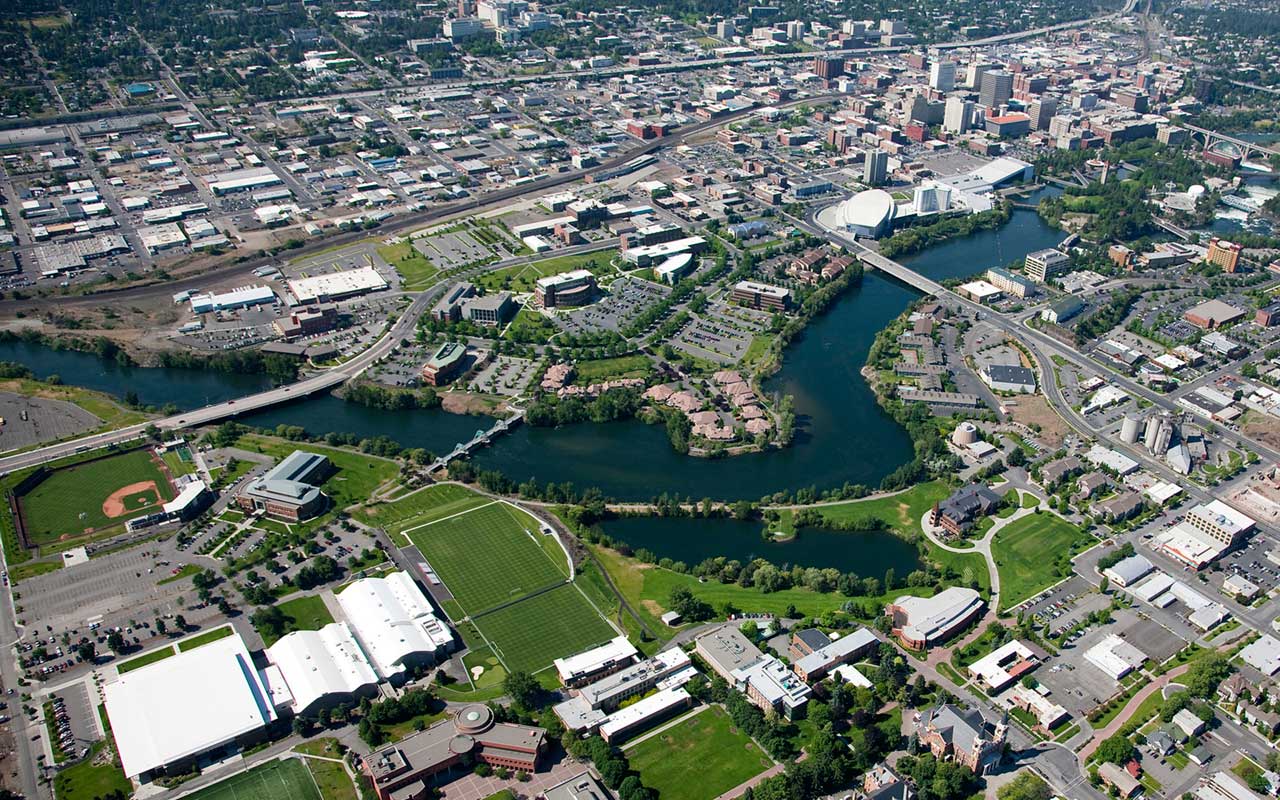Goals
-
Transition from a limited-capacity system to a new, more scalable water management solution
-
The new solution needed to enable operators to make changes and additions without outside technical assistance
Challenges
-
The former SCADA system was limited to 48 sites and was not adaptableto Spokane’s growing needs
-
Obsolete telemetry caused slow communications between the centralcontrol site and remote stations
Results
-
The Upriver Dam generates over 70 million kilowatts of electricity annually, which is enough to power the water plant, contributing to the department’s sustainability efforts
-
Lost water rates (measuring water wasted due to leaks, inaccurate metering or slow repairs) are at 6%, among the lowest in the nation
-
The AVEVA system enables remote monitoring and control which has cut the frequency of travel to stations by about two-thirds while saving on vehicles and fuel
-
The redundant SCADA system guarantees uninterrupted operations for the City of Spokane, 24/7
-
The solution’s scalable architecture and object-based implementation empower in-house staff to deploy applications and perform changes without outside help

“The real value to us is that we have continuous monitoring and can identify problems more quickly. You have confidence that what the system is telling you is correct.” - Mark Cleveland, Operations Supervisor
Background
SPOKANE, Washington – About 125 years ago, the leaders of the City of Spokane bought a small waterworks and set in motion a wave of innovation that continues today. Even then, they understood that the growth of the city depended on offering basic services to residents. But they probably could not have foreseen the large metropolitan area of today that has access to some of the highest quality, lowest cost drinking water in the state. In addition to providing water, the City of Spokane Water and Hydroelectric Services Department manages the Upriver Dam, which generates over 70 million kilowatts of electricity annually. The dam and the energy it provides are integral to the city’s sustainability – the power is used to pump water throughout Spokane and also provides enough excess energy to meet the annual needs of about 4,400 local households. The development of this system has always bridged the past with the present while keeping an eye on the future. Starting with one pumping station that had a 10-million gallon per day capacity in 1895, today’s plant is highly sophisticated, including more than 50 water pumping and storage sites spread out over 70 square miles and two hydroelectric powerhouses. In the summer, Spokane water usage runs at about 180 million gallons of water each day.
Growth Leads for a Need for Improvements
As Spokane expands, the Water and Hydroelectric Services Department recognizes that it must accommodate increasing demands for water and power. Its 1980s Supervisory Control and Data Acquisition (SCADA) system was limited in the number of sites it could serve. It also did not allow the level of control that the Department wanted, so an upgrade was planned.
H2E, Inc., a local Spokane AVEVA certified system integrator, was tapped for the project, with Industrial Software Solutions also providing assistance. The Department was convinced that H2E had the skills to create a new SCADA system that would provide reliability, ease of use, scalability and improved in-house management as well as integration of their old system with new components. “The AVEVA Suite provides a very flexible platform to address our clients’ needs. Adaptation of the software to the various markets H2E serves is a key consideration in addressing our client’s expectations,” said Doug Ransdell, H2E Business Development Officer.

The Power of Templates
Continuous service was maintained during the transition to the new AVEVA solution. Master templates were developed that would provide robust capabilities throughout the system, whether they were applied to booster stations, wells or other sites. First, existing remote telemetry units (RTUs) were replaced with new programmable logic controllers (PLCs). This allowed the Department to leverage the similar code of these nodes through the new AVEVA System Platform.
Additionally, radio units are now in place, speeding communications time between the central control room, remote units and operators in the field. When a new station is added, the appropriate template is loaded. In-house Department engineers can quickly deploy the template to bring the new location online, sometimes in as little as an hour and a half. In the old system, outside resources were required for additions and changes. But with the AVEVA software, Spokane engineers can save both time and money by managing the system themselves. Gary Zickler, Operations Manager, said,“We create and turn on new stations ourselves and they all look the same, which makes it easier for operators to use at three o’clock in the morning.”

Popular with Operators
Operators are fans of the new system too. After sites are configured, employees can make changes easily with the intuitive AVEVA InTouch® Human Machine Interface (HMI). Standardized graphics mean that the entire system is recognizable at a glance, so operators don’t have to worry about learning to operate new stations. Because all stations are instantly familiar, training is easier and more efficient.
According to Mark Cleveland, Operations Supervisor, “The biggest selling point was the interface between the operator and the system – people who use it actually like it.” And, since the operators are responsible for 24/7, uninterrupted water service, they also appreciate that the new system is fully redundant. If a SCADA server goes offline or is taken down for scheduled maintenance, communications and alarms automatically switch over and the system can be managed from a redundant station. The new architecture and PLCs are designed so there is no single point of failure, which brings peace of mind and allows operators to concentrate on their assigned duties, rather than worrying about reliability.
Enhanced Control Saves Time and Money
With 57 sites and more to come, the Department was aware that it could not continue to operate as usual. In the past, engineers traveled from the master station, visiting each remote location to take measurements and perform inspections.
Now, the AVEVA solution is helping to save time as well as money. Operators can monitor each site through the HMI and make repairs and changes without physically going to them. Time spent traveling is now about one-third of what it was before the AVEVA software was in place. And along with better use of operator time, fuel and insurance costs plus wear and tear on vehicles are greatly reduced.
Another important benefit of the new system is a decrease in lost water rates. Because of the SCADA solution’s improved automation and notification, less water is wasted due to leaks, inaccurate metering or slow repairs. In fact, at 6%, Spokane’s lost water rate is one of the lowest in the United States.
Reporting Also Adds to Efficiency
The Spokane Water and Hydroelectric Services Department monitors and tests water quality around the clock to ensure safety and security. Additionally, it must conform to compliance and reporting mandates from the U.S. Federal Energy Regulatory Commission (FERC), the North American Electric Reliability Corporation (NERC), NIOSH, the Department of Health and others. To help manage these diverse requirements, the AVEVA solution provides both real-time and historical information. AVEVA Historian gathers data and then AVEVA ActiveFactory® provides trending statistics.
Using both on-screen tracking and reports, department staff members use their expertise to trouble-shoot the system. Many issues can be corrected before they become disruptive. And new stations can be planned and designed to meet both current and future estimated needs. Plus, AVEVA software reports can be exported to Microsoft® Excel® and Word® for easy communication to management.
Planning for Tomorrow
Since the late 1800s, the City of Spokane has been committed to providing a safe and continuous supply of water and power. Today, the AVEVA software solution is helping the Water and Hydroelectric Services Department increase efficiency and flow confidently into the future. Working together, they will contribute significantly to opportunities for further economic growth.